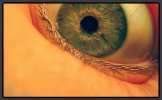
The presence of occluders significantly impacts object recognition accuracy. However, occlusion is typically treated as
an unstructured source of noise and explicit models for occluders have lagged behind those for object appearance and shape. In
this paper we describe a hierarchical deformable part model for face detection and keypoint localization that explicitly models part
occlusion. The proposed model structure makes it possible to augment positive training data with large numbers of synthetically
occluded instances. This allows us to easily incorporate the statistics of occlusion patterns in a discriminatively trained model. We
test the model on several benchmarks for keypoint localization and detection including challenging data sets featuring significant
occlusion. We find that the addition of an explicit model of occlusion yields a system that outperforms existing approaches in
keypoint localization accuracy and detection performance.
Download: pdf
Text Reference
Golnaz Ghiasi and Charless C. Fowlkes.
Occlusion coherence: detecting and localizing occluded faces.
arXiv:, 2015.
URL:
http://arxiv.org/abs/1506.08347.
BibTeX Reference
@article{GhiasiF_TR_2015,
author = "Ghiasi, Golnaz and Fowlkes, Charless C.",
title = "Occlusion Coherence: Detecting and Localizing Occluded Faces",
journal = "arXiv:",
volume = "abs/1506.08347",
year = "2015",
url = "http://arxiv.org/abs/1506.08347",
tag = "object_recognition,people"
}
